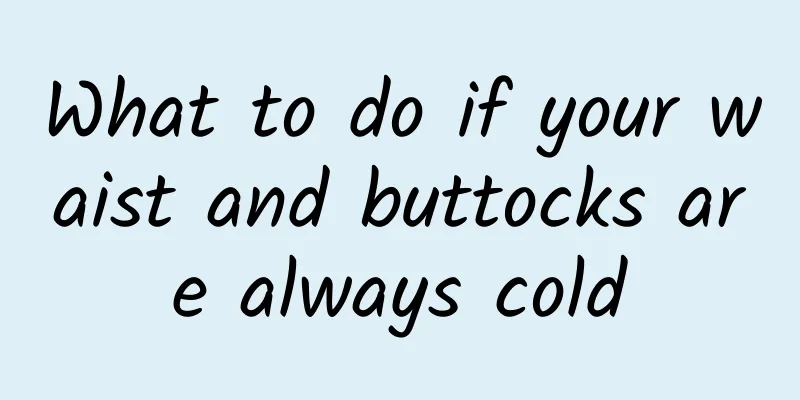Symptoms and treatment of wind allergy

|
Wind allergy is urticaria, a very common skin disease. It not only reacts to wind, but also temperature, sunlight, stimulation, etc. will affect our skin, resulting in symptoms similar to edema erythema. We need to have a comprehensive understanding of the symptoms and treatment of wind allergy, make correct judgments, and then carry out targeted treatment. Let’s take a closer look below. The basic clinical manifestation is the appearance of wheals on the skin. The skin often itches first, followed by the appearance of wheals, which are bright red or pale, skin-colored. A few patients have edematous erythema. The size and shape of the wheals vary, and the onset time is uncertain. The wheals gradually spread and merge into sheets. Due to edema of the dermal papillae, the openings of the epidermal hair follicles can be seen sunken downward. The wheal lasts from several minutes to several hours, and in some cases it can last for several days before disappearing without leaving any trace. The rash occurs repeatedly in batches, mostly in the evening. Wheals are often generalized but may also be localized. Sometimes it is accompanied by angioedema, and occasionally bullae form on the surface of the wheal. Some patients may experience nausea, vomiting, headache, head swelling, abdominal pain, and diarrhea. Severe patients may also have systemic symptoms such as chest tightness, discomfort, pale complexion, accelerated heart rate, weak pulse, low blood pressure, and shortness of breath. A disease that is cured in a short period of time is called acute urticaria. If the urticaria recurs at least twice a week for more than 6 weeks, it is called chronic urticaria. In addition to the common urticaria mentioned above, there are also the following special types of urticaria. 1. Patients with skin scratch urticaria/artificial urticaria have enhanced physiological responses to weak external mechanical stimulation, resulting in wheals on the skin. After scratching, or when wearing tight belts or garters, the patient will develop local wheals and itching. 2. Delayed skin scratches: Wheals and erythema appear 6 to 8 hours after stimulation, and the wheals last for 24 to 48 hours. There is more than one delayed skin lesion, and small segments or dots are formed along the scratch. The lesions are deeper or wider, and even expand to both sides to form lumps. Local fever and tenderness. 3. Delayed pressure urticaria rash occurs 4 to 6 hours after local skin pressure is applied and usually lasts 8 to 12 hours. Symptoms include localized, deep, painful swelling, which may be accompanied by chills, fever, headache, joint pain, malaise, and a mild increase in white blood cell count. Large local swelling resembles angioedema and is prone to occur on the palms, soles, and buttocks. There may be a 24-hour incubation period before the lesions occur. 4. The rash of cholealkaloid urticaria is characterized by the occurrence of generalized small wheals of 1 to 3 mm in size except for the palms and soles, with obvious surroundings. Satellite wheals can sometimes be seen among them, or only tiny sparse wheals with or without red halos can be seen. Sometimes the only symptom is itching without wheals. The damage lasts from 30 to 90 minutes, or up to several hours. It mostly occurs during or shortly after exercise, accompanied by itching, tingling, burning, heat or skin irritation. It can also be triggered by heat or emotional tension. 5. Cold urticaria can be divided into familial and acquired types. The former is relatively rare and is inherited in an autosomal dominant manner. A delayed reaction occurs half an hour to four hours after exposure to cold. The rash is a non-itchy wheal that may have a cyanotic center surrounded by a pale halo. The rash lasts for 24 to 48 hours and has a burning sensation, accompanied by systemic symptoms such as fever, joint pain, and increased white blood cell count. The latter is more common, and patients often experience it when the temperature drops suddenly or after contact with cold water. Within minutes, itchy edema and wheals occur locally, most often on the face and hands. In severe cases, other parts of the body may also be affected. Headache, flushing of the skin, low blood pressure, and even fainting may occur. 6. Solar urticaria: After the skin is exposed to sunlight for a few minutes, itching, erythema and wheals quickly appear locally. The wheal disappears after about 1 to several hours. The rash may be accompanied by chills, fatigue, fainting, and intestinal cramps, which disappear within a few hours. 7. Contact urticaria is characterized by the occurrence of wheals and erythema when the skin comes into contact with certain allergens. It can be divided into two categories: immune mechanism and non-immune mechanism. Non-immune disease is caused by the direct action of primary irritants on mast cells to release substances such as histamine. Almost all contacts will become ill without the need for substance sensitization. The immunity is a type I allergic reaction, and specific IgE antibodies can be detected. In addition, there are rarer types of urticaria such as heat urticaria, exercise urticaria, tremor urticaria, aquagenic urticaria, adrenergic urticaria, and electrical urticaria.Treatment 1. General treatment: Since the causes of urticaria vary, the treatment effects are also different. The specific treatment measures are as follows: (1) Eliminate the cause. For every patient, efforts should be made to find the cause of the attack and avoid it. If the cause is infection, the infected lesions should be treated actively. If the allergy is caused by drugs, the allergy medication should be stopped; if the allergy is caused by food, find out the allergic food and do not eat this food again. (2) Avoid inducing factors. For example, for cold urticaria, you should keep warm; for acetylcholine urticaria, you should reduce exercise, sweating and mood swings; for contact urticaria, you should reduce the chance of contact. 2. Drug treatment (1) Antihistamines ①H receptor antagonists have strong anti-histamine and anti-other inflammatory mediator effects and are effective in treating various types of urticaria. Commonly used H1 receptor antagonists include diphenhydramine, cyproheptadine, chlorpheniramine, acrivastine, cetirizine, mizolastine, loratadine, ebastine, azelastine, desloratadine, etc.; when single treatment is ineffective, two different types of H1 receptor antagonists can be used in combination or in combination with H2 receptor antagonists. Commonly used H2 receptor antagonists include cimetidine, ranitidine, famotidine, etc. It is effective for acute, chronic urticaria and cold urticaria. Dosage varies from person to person. ② Doxepin is a tricyclic antidepressant that is particularly effective for chronic urticaria and has fewer adverse reactions. Doxepin is a better choice of drug for patients with urticaria who are not responsive to traditional antihistamines. (2) Drugs that inhibit mast cell degranulation and reduce histamine release ① Meta-hydroxyisobutyrine sulfate is a β2 adrenergic receptor stimulator that can increase the concentration of cAMP in the body, thereby inhibiting mast cell degranulation. ② Ketotifen inhibits mast cell degranulation and prevents the release of inflammatory mediators (such as histamine, slow-reacting substances, etc.) by increasing the concentration of cAMP in the body. Its suppressed. It is stronger and faster than sodium cromoglycate and can be taken orally. ③Sodium cromoglycate can block the binding of antigen and antibody and inhibit the release of inflammatory mediators. If used in combination with glucocorticoids, the dosage of the latter can be reduced and the therapeutic effect can be enhanced. ④ Tranilast reduces the release of histamine by stabilizing the mast cell membrane. (3) Glucocorticoids are second-line drugs for the treatment of urticaria. They are generally used when severe acute urticaria, urticarial vasculitis, and pressure urticaria are ineffective against antihistamines, or when chronic urticaria is severely stimulated. They are administered intravenously or orally, and long-term use should be avoided. Commonly used drugs are as follows: ① prednisone; ② triamcinolone; ③ dexamethasone; ④ diprosone. In emergency situations, hydrocortisone, dexamethasone, or methylprednisolone is given intravenously. (4) Immunosuppressants: When patients with chronic urticaria have an autoimmune basis and the disease recurs, and the above treatments cannot achieve satisfactory results, immunosuppressants can be used. Cyclosporine has a good therapeutic effect. Azathioprine, cyclophosphamide, methotrexate and immunoglobulin can all be tried. Tripterygium wilfordii also has a certain therapeutic effect. Due to the high incidence of side effects of immunosuppressants, they are generally not recommended for the treatment of urticaria. In addition, drugs that reduce vascular permeability, such as vitamin C, vitamin P, calcium supplements, etc., are often used in combination with antihistamines. If it is caused by infectious factors, appropriate antibiotics can be used for treatment. |
<<: The simplest treatment for rheumatoid arthritis
Recommend
Traditional Chinese medicine teaches you 8 small movements to protect your kidneys
Kidney deficiency symptoms can be divided into Yi...
What supplements are good for cerebral infarction? Which foods are effective for cerebral infarction?
Cerebral infarction is a very common disease in l...
How long does it take to resume ovulation after medical abortion?
Generally speaking, as long as the medical aborti...
Yellow discharge from the nipple
Yellow discharge from the nipple may be caused by...
Effects of drinking wolfberry and mulberry soaked in water
Soaking wolfberry and mulberry in water can play ...
What are benign lung tumors? Teach you how to identify benign and malignant lung tumors!
It is unfortunate to have a tumor, but if it is a...
What should I do if an adult has a recurring fever?
Although everyone's body temperature is diffe...
Tooth extraction techniques for children
When children reach a certain age, their deciduou...
Can synovitis be completely cured?
Synovitis is a relatively common disease. It is a...
What causes vaginal itching in women?
Itching symptoms inside the female vagina are qui...
How to lose weight the easiest way, four simple ways to lose weight
Becoming more beautiful and thinner is the pursui...
What ointment should I use for herpes at the corners of my mouth?
Every summer, many people's lips will become ...
Is Chinese herbal whitening and anti-freckle cream really effective?
With the development of modern technology, more a...
What are the symptoms of qi and blood attacking the heart?
Traditional Chinese medicine is a great cultural ...
Stuffy nose with blood
We often encounter the phenomenon of nasal conges...









